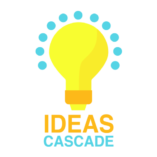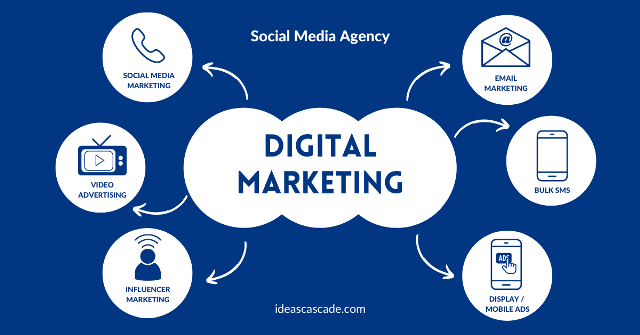Every website owner aspires to achieve a high rank on SERP to gain maximum audience and genuine traffic. No shortcut will make the website in the top 5 on the search engine until it is paid but still, it does not last long.
Top organic ranking can only be achieved through continuous on-page and off-page optimization.
In this article, our primary focus is on-page optimization which can be defined as:
“The strategies optimized ON website and webpage to improve search engine ranking are called on-page SEO and on-site SEO.”
Multiple elements play a crucial part in optimizing on-page SEO including content, keywords, meta tags, URLs, etc.
Why On-Page SEO
On-page SEO helps search engines to better understand the content of websites and web pages. So, if the user makes any query that aligns with the information you provide on the website will be featured on SERP. Eventually, the ranking of the website gets better.
The ultimate aim of page optimization is to boost website ranking and increase website traffic with potential sales. Although the process requires patience and time, the result achieved is outstanding.
In this article, we will dig into the on-page SEO elements that directly affect search engine ranking.
Elements of On-page SEO
Now, no more wait for my dear readers. So, I am moving towards the details of on-page SEO.
Create an Irresistible Content
When it comes to search engine optimization (SEO), the first and foremost thing, which is fundamental to all other practices is CONTENT. Producing top-notch content is crucial in building an audience and keeping user engagement.
Although other strategies do have their part in on-page SEO, they primarily start with compelling quality content. Let’s take a look at how exceptional content can be produced.
- Well Researched and detailed Content
Writing content that is thoroughly researched and full of valuable information is important for audience engagement. Authentic information on the website keeps the visitors coming back for more content. This builds trustworthy relationships which is the linchpin to success in any business.
Moreover, writing in detail is not only compelling to users but it also helps the writer to craft content with comprehensive information. So, it enables the exploration of different scenarios and perspectives. Writing in detail also minimizes the repetitive use of similar words hence improving content quality.
- Unique
Many writers opt for the same topic to write on. The real challenge lies in making yourself stand apart. Maintaining a unique and consistent tone that distinguishes the content from the myriad of other websites is essential for on-page SEO.
- User friendly
Crafting content that aligns with the user queries and is understandable to them is another crucial tactic for optimizing the website. Search engines prioritize the content on SERP if it truly answers the audience query.
Furthermore, it is needed to take care of keyword density, LSIs, and other content-related strategies.
Maximize the links’ power
Adding links to the webpage is another important aspect of on-page SEO. This strategy directs the visitors to explore more information either on a similar website i.e., an internal link, or lands on another website i.e., an external link.
A page with links is more easily navigated by web crawlers than an orphan page (a web page with no links). Let’s have a look at how these links help a webpage to rank on search engines.
- Internal links:
A type of hyperlink that directs to another webpage on a similar website is called an Internal link.
You must have observed this strategy while reading an article on a website where they add a link within the content for the related piece of information on different web pages of the same website.
Look at this example, where a related article link is added from the same website.
https://www.healthline.com/health/beauty-skin-care/niacinamide#benefits
https://www.healthline.com/health/home-remedies-for-oily-skin
Adding 5-10 internal links for an average of 2000 words article is considered a good SEO practice. Adding these links signals the web crawlers about the page value and interconnectedness of the pages.
- External links
Unlike internal links, these hyperlinks target the other domain or in simple words, an external link is a hyperlink that directs the webpage of another website. External links bring credibility to the website akin to receiving praise from other sources.
Therefore, search engines value external links more. External links also improve the user experience by reducing the extensive search hassle and giving a convenient way to access more information.
While adding these links to the content, maintain the balanced link volume i.e., the quantity of links included in the content. These links assist the web crawlers to understand the authority of the web page resulting in improved SEO ranking.
Speed matters: Page load speed
Page loading speed refers to:
“How quickly the browser can open a fully functional website.”
This speedy era demands everything to be fast and give prompt responses. So how is it possible for a website with a low loading speed to get ranked on search engines? It’s a big NO.
Therefore, a website looking to get a high rank on search engines must optimize its page load speed of approximately 3-5 seconds. There are numerous free and paid tools including Google’s page speed insight to check the website performance.
Multiple factors play a part in loading speed including web page file size, image compression, and the site’s server. Unlike these factors, overloaded big-sized images, outdated code, dysfunctional servers, etc. slow down the page speed.The process may seem effortless but it is rather intricate and complex.
It is also important to note that page load speed has to be optimized for both desktop and mobile because mobile usage is prevalent for quick searches at any time of the day. A website that is mobile-friendly also impacts SEO ranking positively.
Page URL structure
URL stands for Uniform Resource Locator which is simply the address of each resource available on the browser. Every website and webpage has its unique URL which has to be clear and specified to the information available on the given web page.
Now, thinking about its role in SEO….! It’s the first impression of the web content. A user would click a website from SERP which has a cleared URL. He would love to share with others if they get specific information. Let’s give an example.
While constructing an SEO friendly URL, keep in mind the following aspects:
- Keep the URL short and separate the words with hyphens (-). If words are not separated and written together, Google would consider them as a single keyword and that will negatively impact the website.
- Limit the use of stop words in URLs such as a, the, to, etc. Keep URLs free from these stop words and try to add Primary keywords that provide context to the content.
- Avoid keyword stuffing in URLs. Add only once.
- Limit the folder i.e., forward slash (/) in the URLs. Adding more folders will confuse the audience and will end up low click rate.
- For content-based websites, use static URLs which never change, unlike dynamic URLs, and provide SEO benefits.
- Avoid special characters i.e., .,@!/? one can immediately consider them as spam. So only use text, numbers, and hyphens.
- Web Pages with similar content should be merged to avoid over-stuffing of web pages on the website.
In short, an SEO-friendly website’s URL is short and specific with primary keywords.
Page metadata
Metadata is an HTML code that provides a description of the web content. It is a short snippet that appears on SERP below the webpage title. The average length of metadata description is 150-160 characters.
Although metadata does not directly affect search engine ranking but plays a crucial role in increasing click-through rate (CTR) which positively impacts SEO ranking.
It is therefore important to put maximum effort into writing user-friendly meta descriptions that clearly answer user queries.
Schema markup
Unlike metadata, schema markup is structured data that provides details of the content elements of a webpage in a snippet. It can also be understood as the map of web page content displayed in content-rich snippets.
The snippets help the search engine to deeply understand the content elements and increase click-through rates (CTR). Thus, it leads to improved SEO ranking.
Plenty of tools are available to create schema markup codes that enhance the content-rich snippets for the webpage such as Schema.org, Google’s Structured Data Markup Helper, etc.
Image ALT text
Image alternative (alt) text is a short-condensed description of an image that displays if the image failed to load on the page. It helps the reader to know what the image is exactly about, especially benefitting visually impaired readers.
Additionally, alt text assists web crawlers to understand the content of the image. Ideally, the Alt text should not exceed 125 characters.
Formatting to enhance readability
After finalizing the content and implementing the other On-page SEO techniques, it is time to format the content to meet SEO requirements. This includes:
- Incorporating catchy headings with H1 being the main heading including primary keywords followed by H2-H6 subheading.
- Using bullet points to break down the lengthy content into digestible sections.
- Splitting the large chunks of content into short paragraphs that are easily readable.
The content that is visually appealing tends to be read more than unformatted content. Moreover, adding a call to action (CTA) at the end of the content also improves CTR and hence improves on-page SEO.
Key takeaways – EAT principle
Google’s algorithms operate on the basis of the E-A-T principle i.e., Expertise, Authoritativeness, and Trustworthiness. Creating content that fulfills three of these requirements tends to achieve a high rank on search engine result pages (SERP).
All the aforementioned on-page SEO techniques can contribute to ranking at a better position on SERP while aligning with the EAT principle.
Conclusion
In a nutshell, helpful content well aligned with the best practices ranks on search engines. The EAT principle creates high quality content. Whereas, On-page SEO makes its ranking easiest.
Therefore, always optimize content by starting a compelling headline, dividing content in proper headings, linking with on page and off page content, using short paragraphs, balance of active and passive voice etc.
Do not forget to use technical aspects like adding schemas, optimizing metadata, using short URLs etc.
Keep in touch with us for more tips. So, you can grow your online presence.



